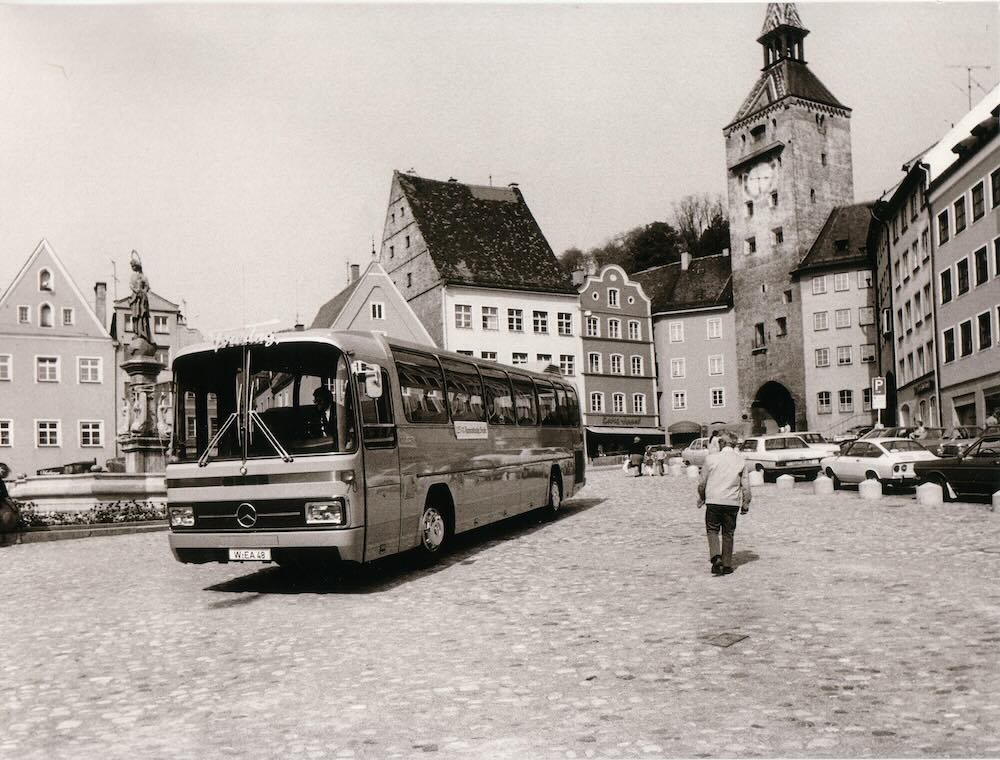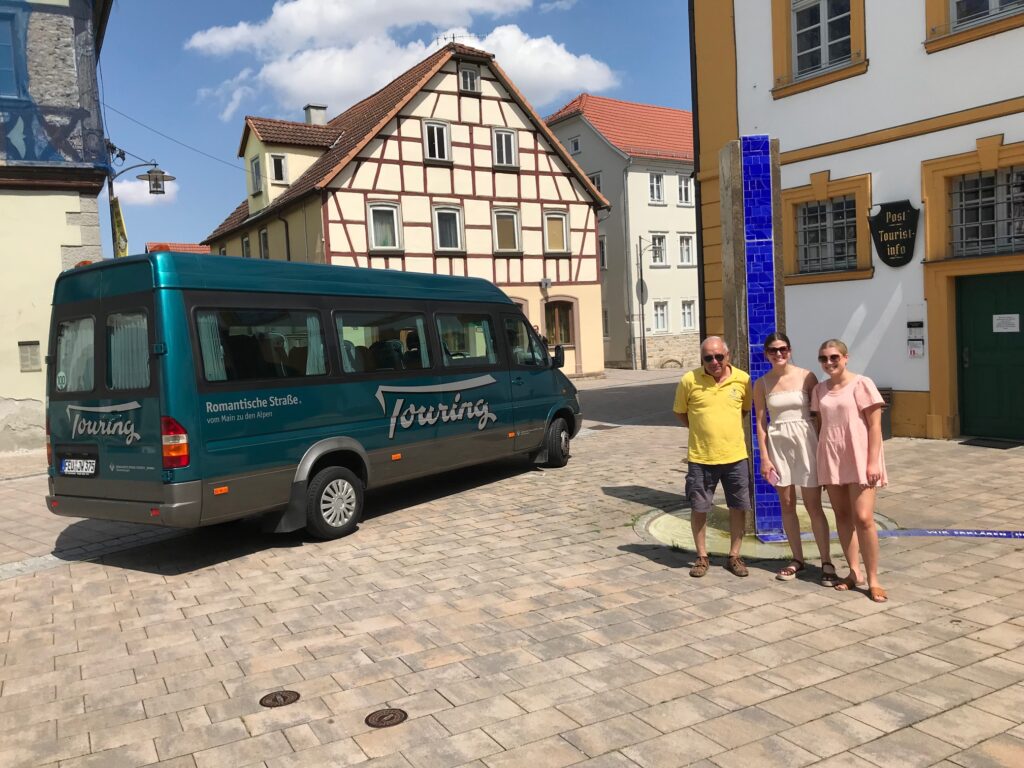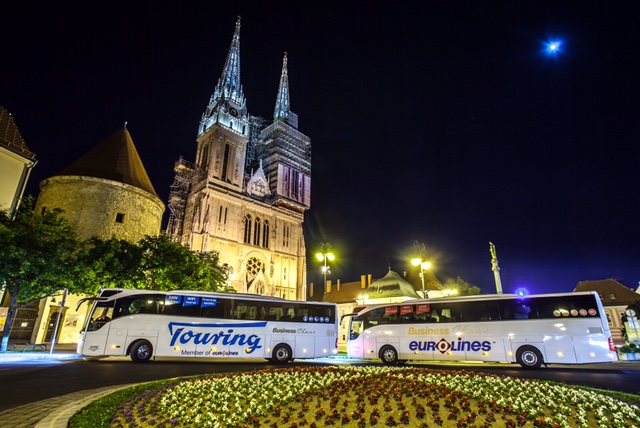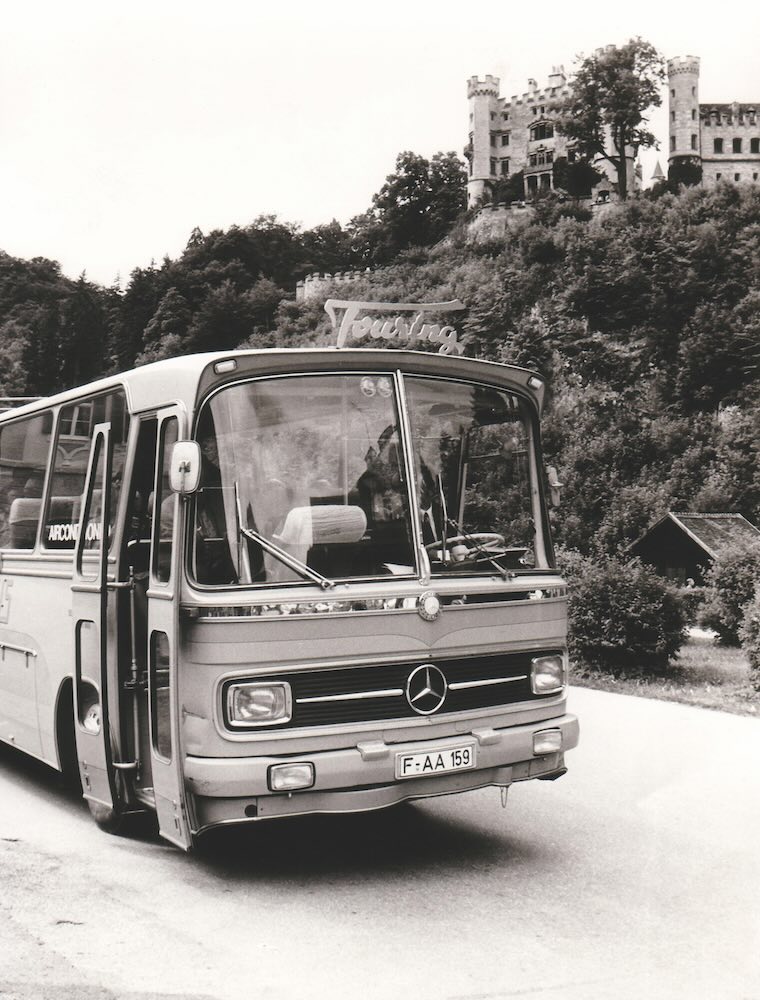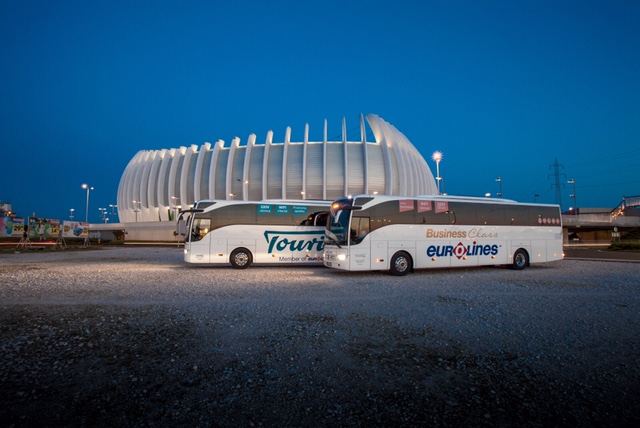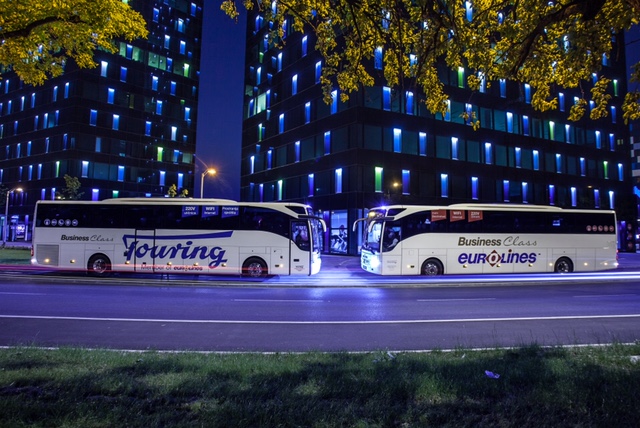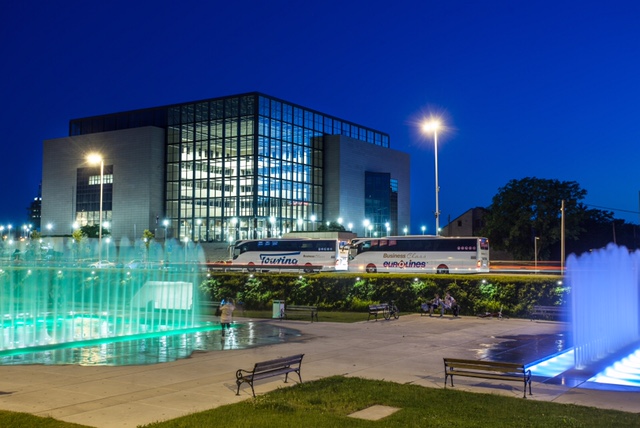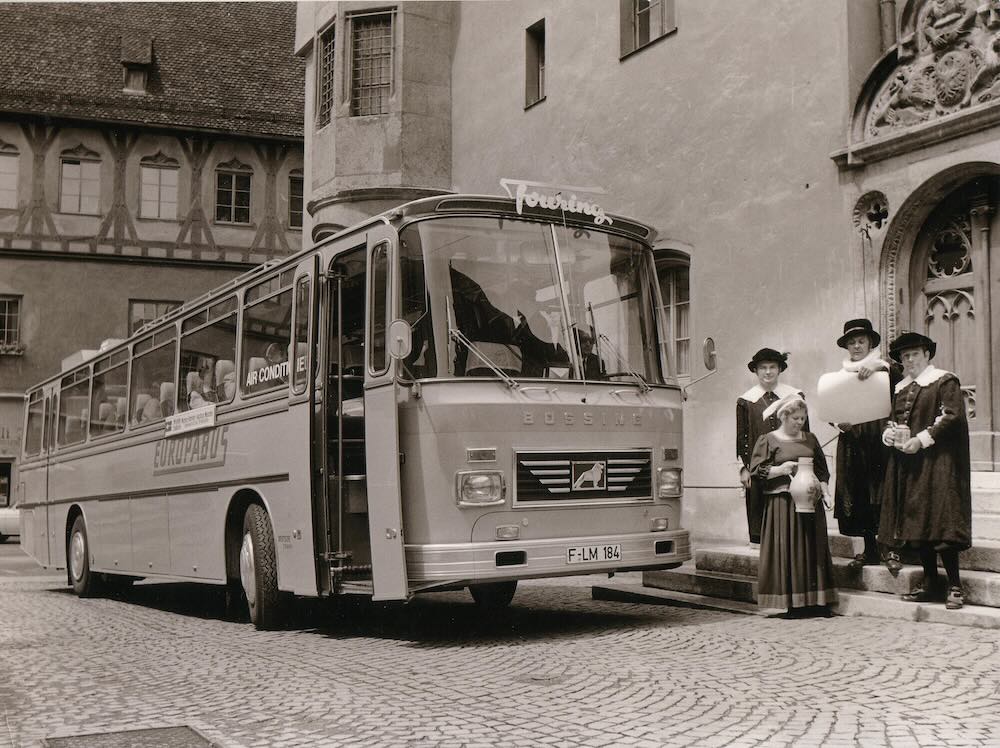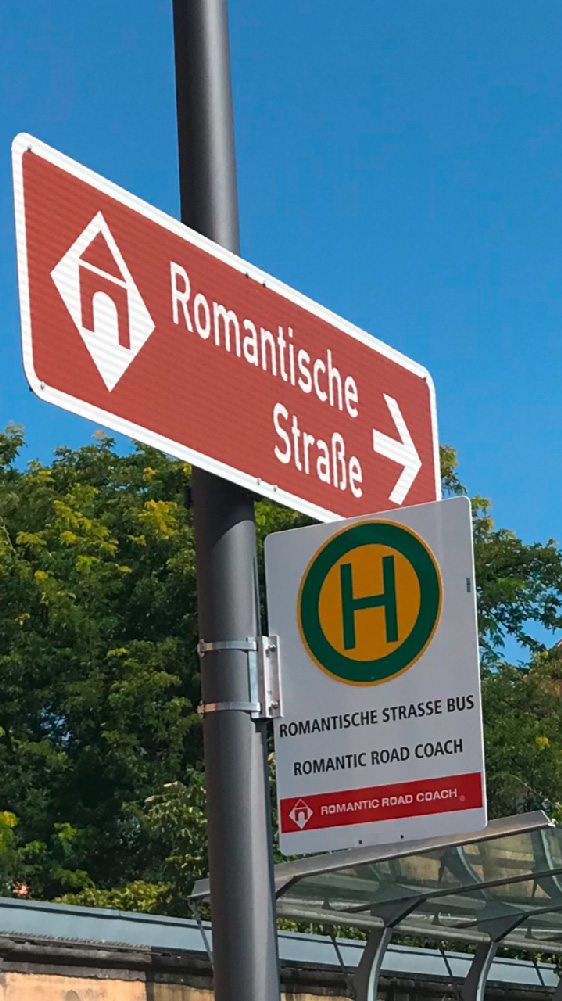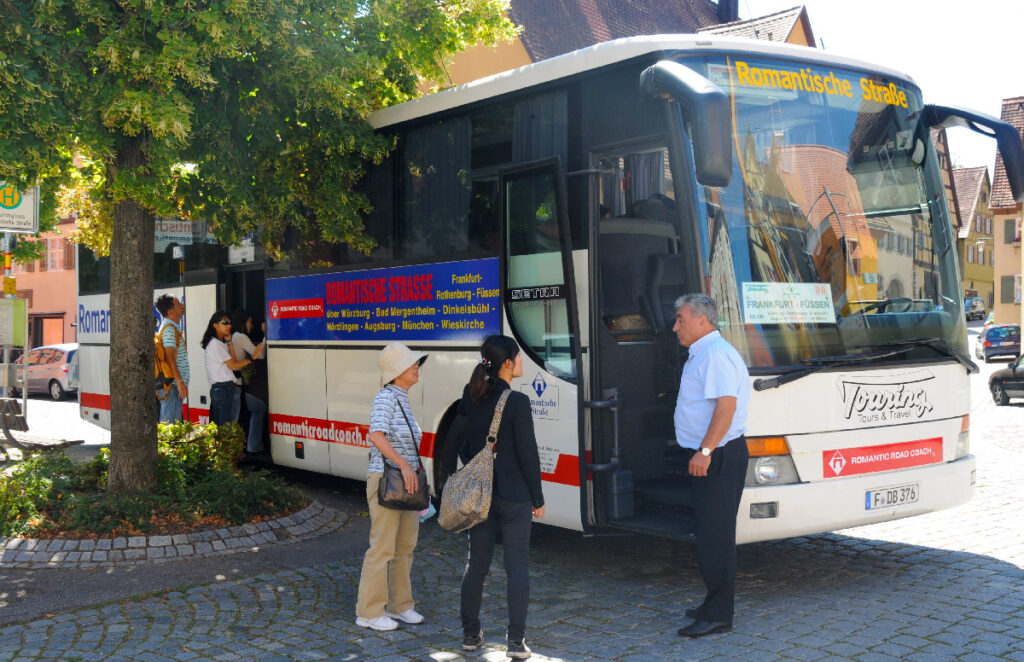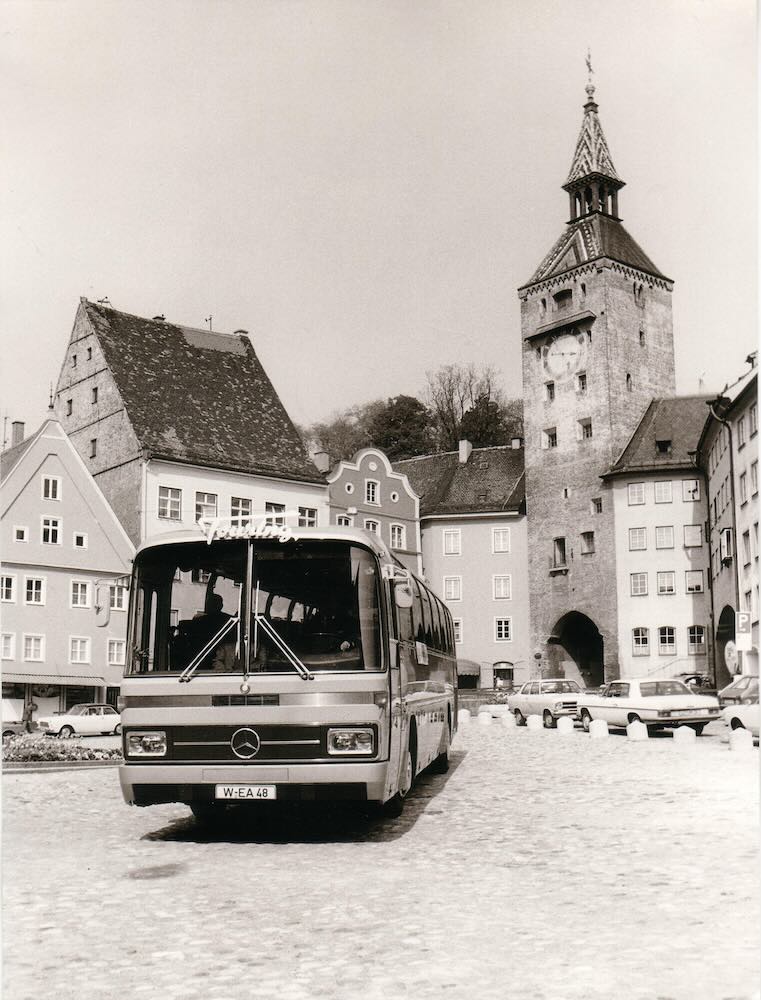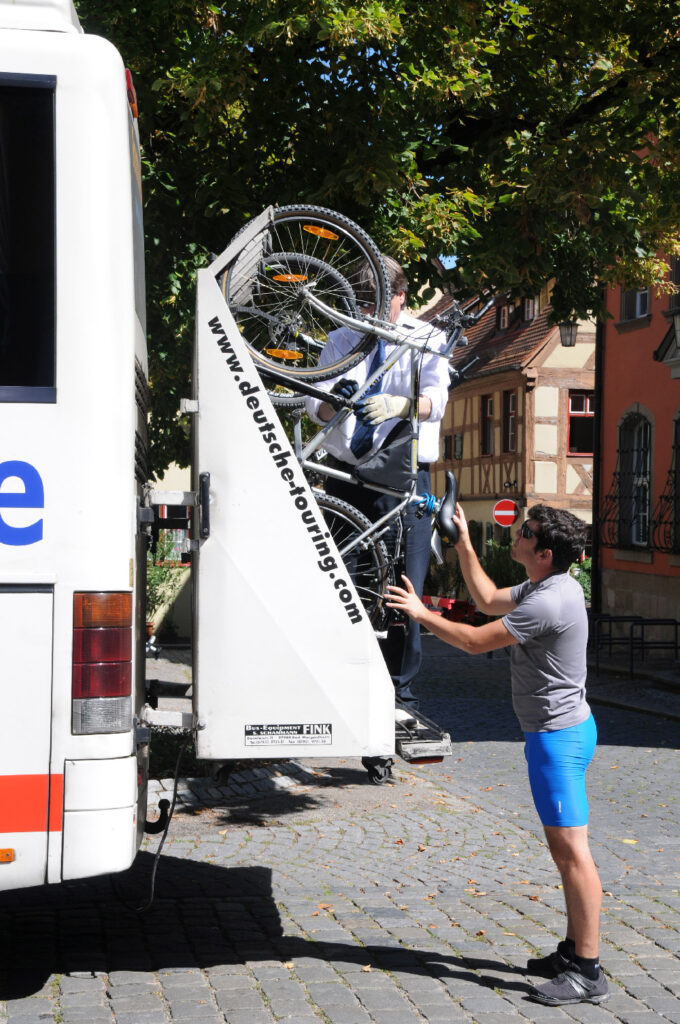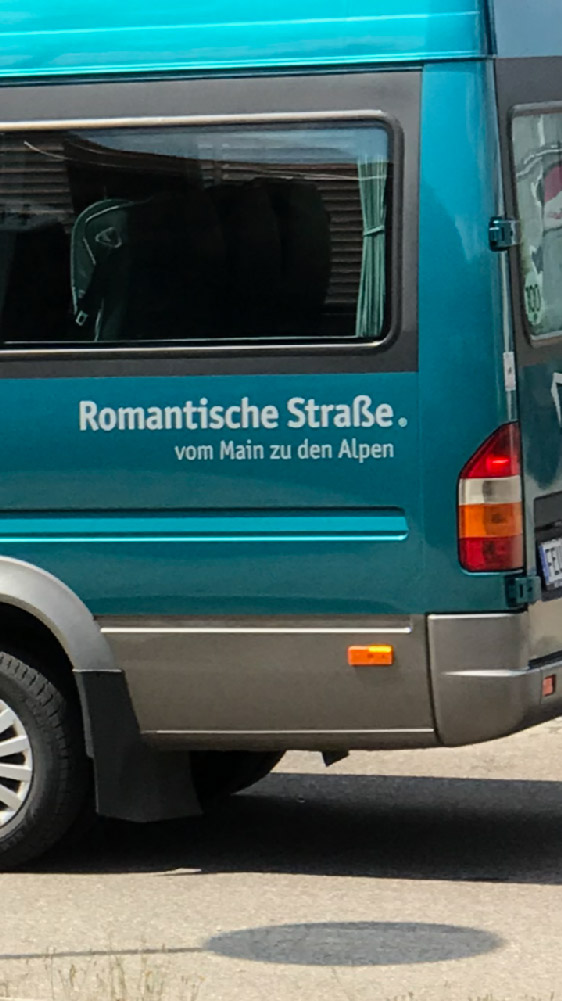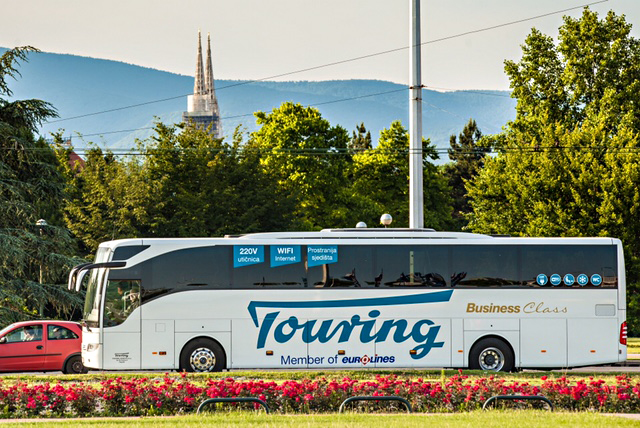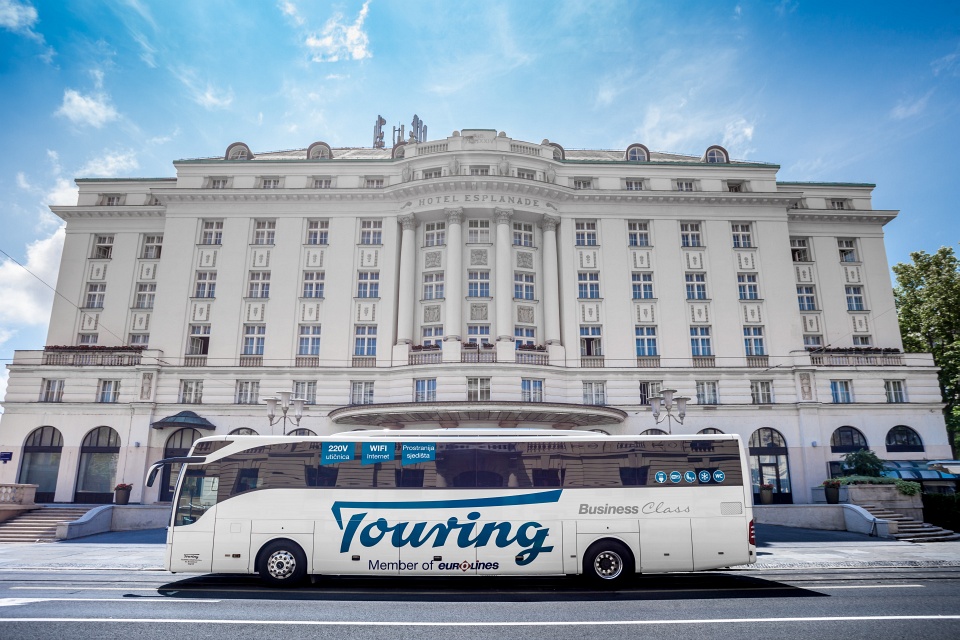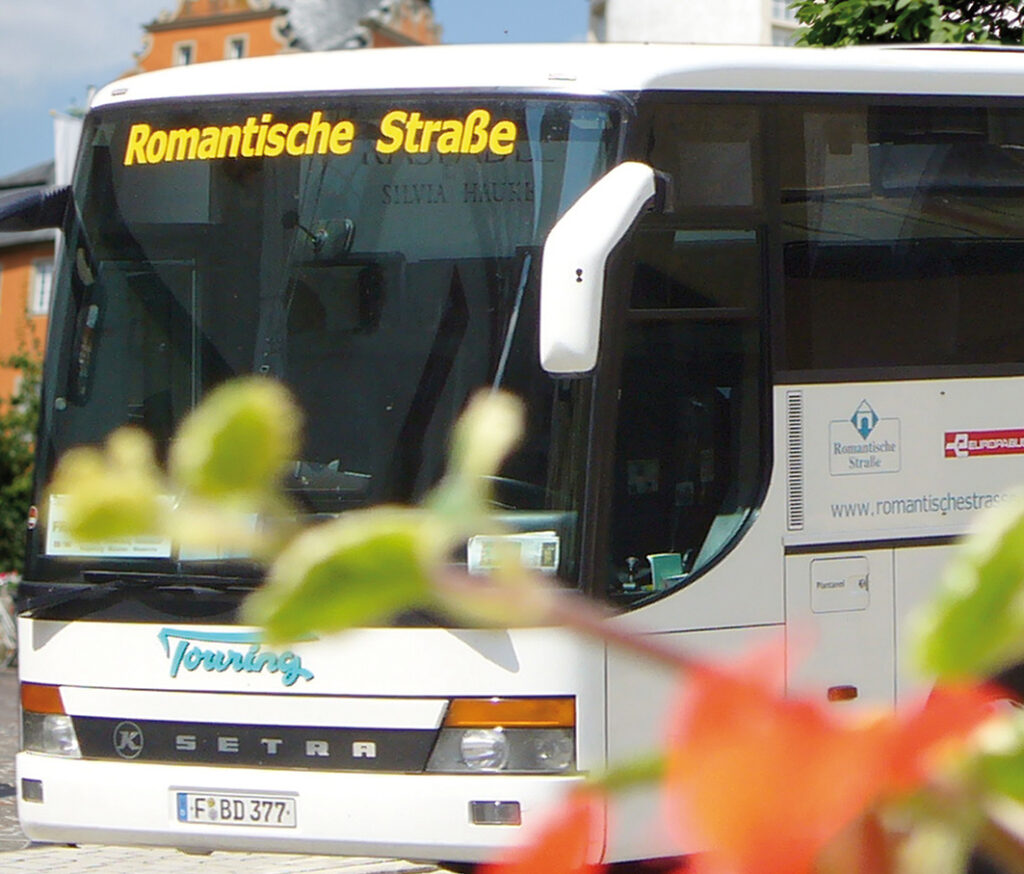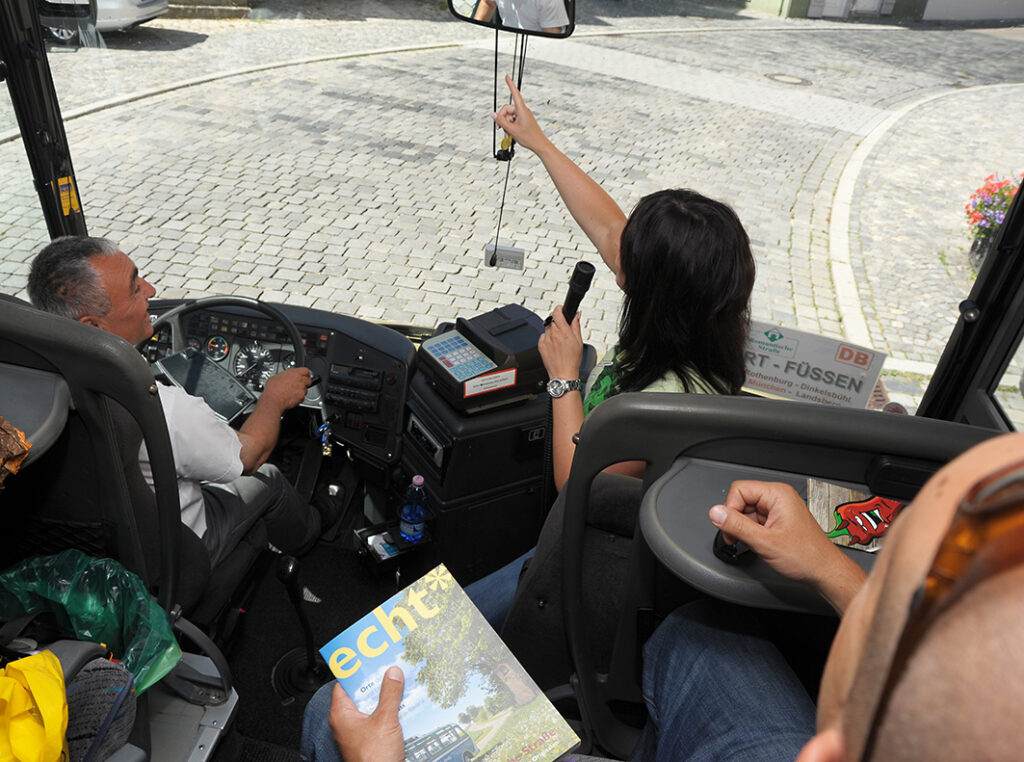… of Deutsche Touring GmbH began on May 31, 1948 with the registration of the business with the City of Frankfurt am Main. The founding fathers, four partners around the initiator Heinz Thomae, who were joined in the same year by Deutsche Reisebüro, Deutsche Bundesbahn and Europäische Güter- und Reisegepäckversicherung as shareholders, did some truly pioneering work. In May 1948, three chassis were purchased in Brunswick with railroad purchase vouchers, onto which bodies were then assembled in Stuttgart. Two further finished buses were purchased from the traditional Büssing brand.
Deutsche Touring GmbH
The history …
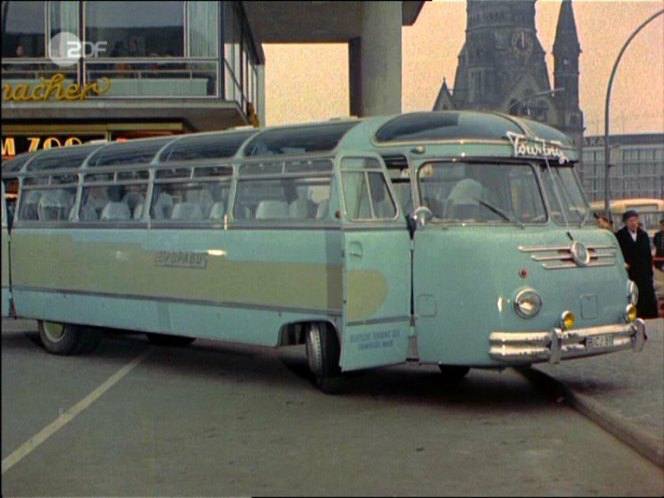
Even the first passengers on the Touring – as the company is still affectionately known today, and not just by employees – did not have to do without small comforts. Converted Wehrmacht radios were used as radios, refrigerators were kept at low operating temperatures using bar ice. Adjustable sleeping chairs, reading lamps, wardrobes and, later, toilets were standard equipment on the coaches. On the Touring premises at Römerhof, Frankfurt’s old airport, there was a restaurant, where even one of the most prominent passengers, Luis Armstrong, played spontaneously, as well as a hotel, the “Touring” house. The company’s own filling station became the highest-selling diesel station in Hesse for a time. To this day, Touring has developed into one of the most important and efficient coach companies in Europe.
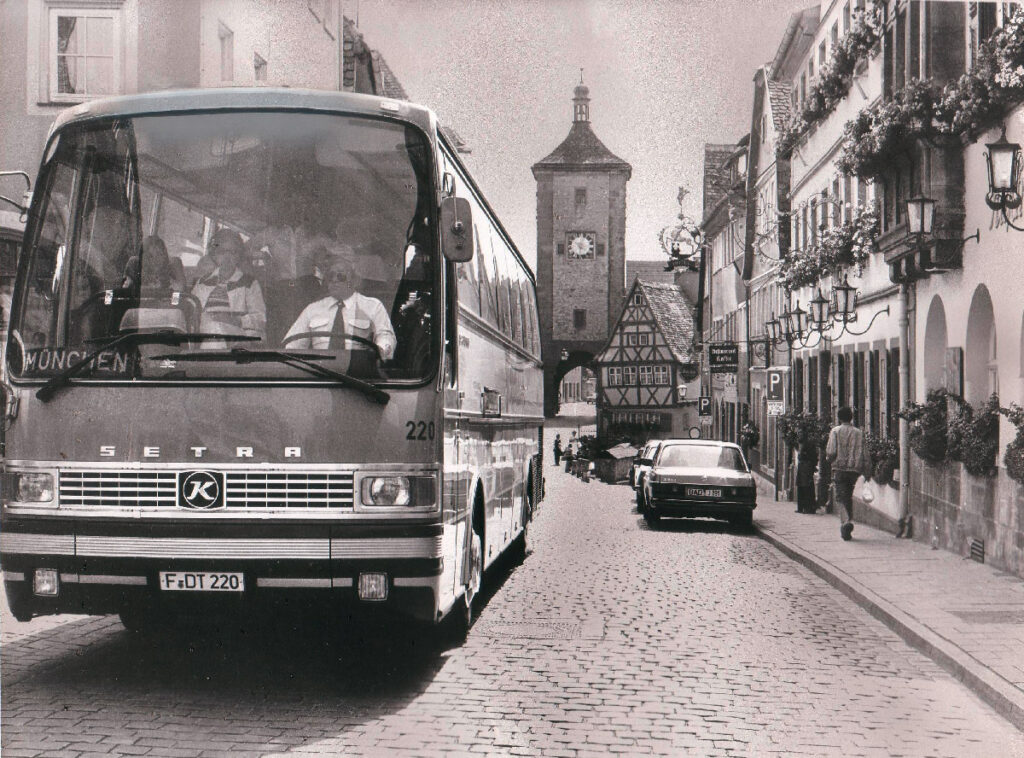
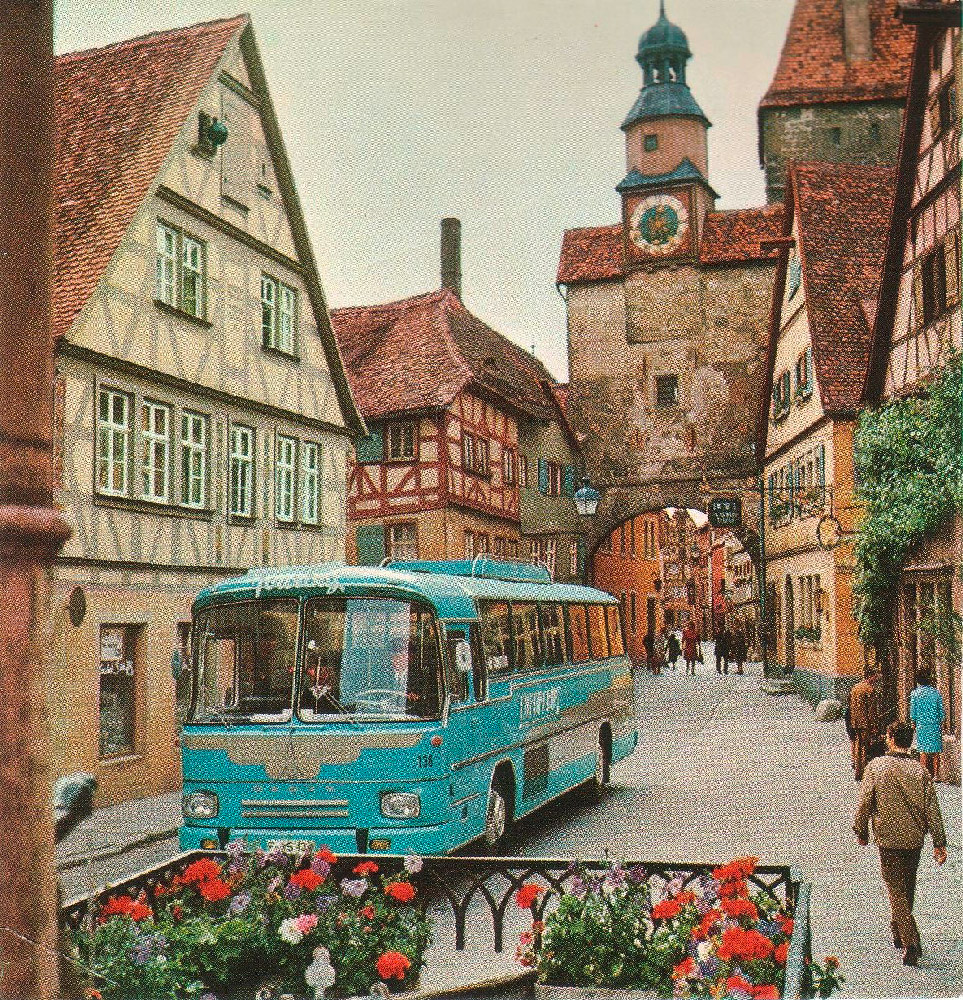
The first international scheduled services were launched as early as 1949, and two years later the “Europabus” association was founded, an association of the tourist road transport services of 14 European railroad administrations. At the end of the 1950s, a new era began with the launch of services to France and Spain. The era of prospering guest worker traffic had begun. In the following years, further scheduled services to the home countries of foreigners living and working in Germany were requested. In 1963, Touring’s turquoise-colored buses began regular scheduled services between Germany and Turkey. There were connecting services from Istanbul to Tehran. Those who didn’t mind long journey times could also travel from Germany to Beirut in six days, where it was possible to travel on to Jerusalem.
With the opening of regular bus connections to Zagreb in 1971, international scheduled services became the backbone of the company. The further expansion of transport services to Serbia in 1980 and to Bosnia in 1983 made the Balkans Touring’s most important source of revenue. Joining the Eurolines organization in 1989 gave Touring further important impetus to expand its Europe-wide, nationwide bus route network together with its international partners. The fall of the “Iron Curtain” opened up additional business areas for Deutsche Touring. The nineties were marked by the start of services to the countries of the former Warsaw Pact. Today, Deutsche Touring buses travel from 80 German cities to 34 European countries. Every year, almost 1.5 million passengers of different nationalities use the international scheduled services to travel around Europe. Touring’s slogan is rightly: “We connect Europe”.
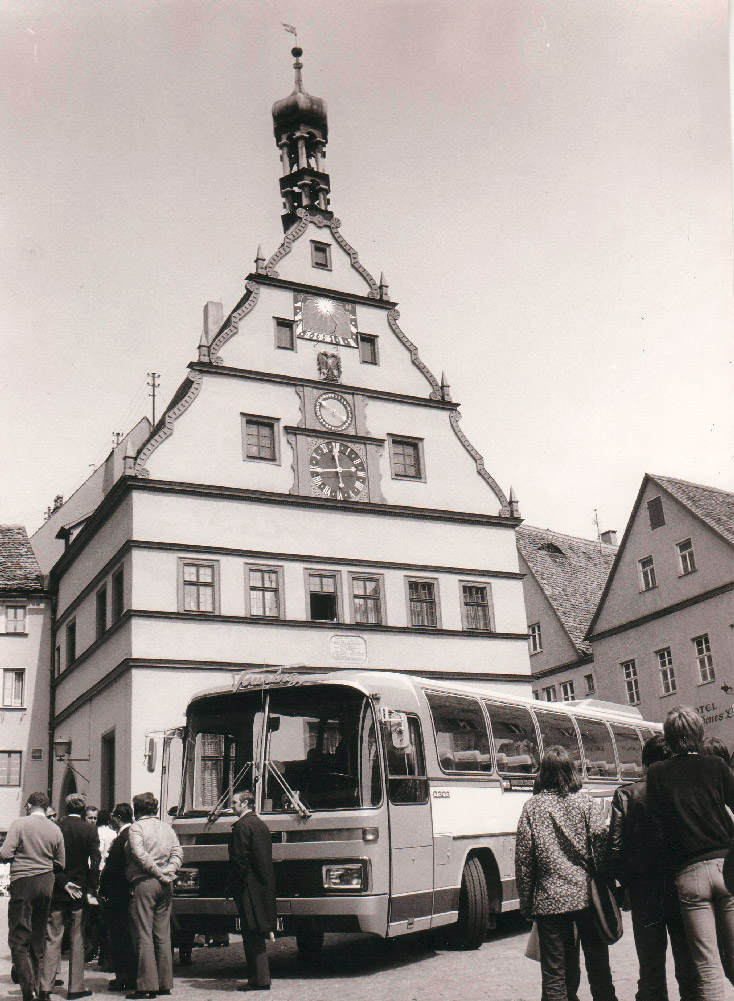
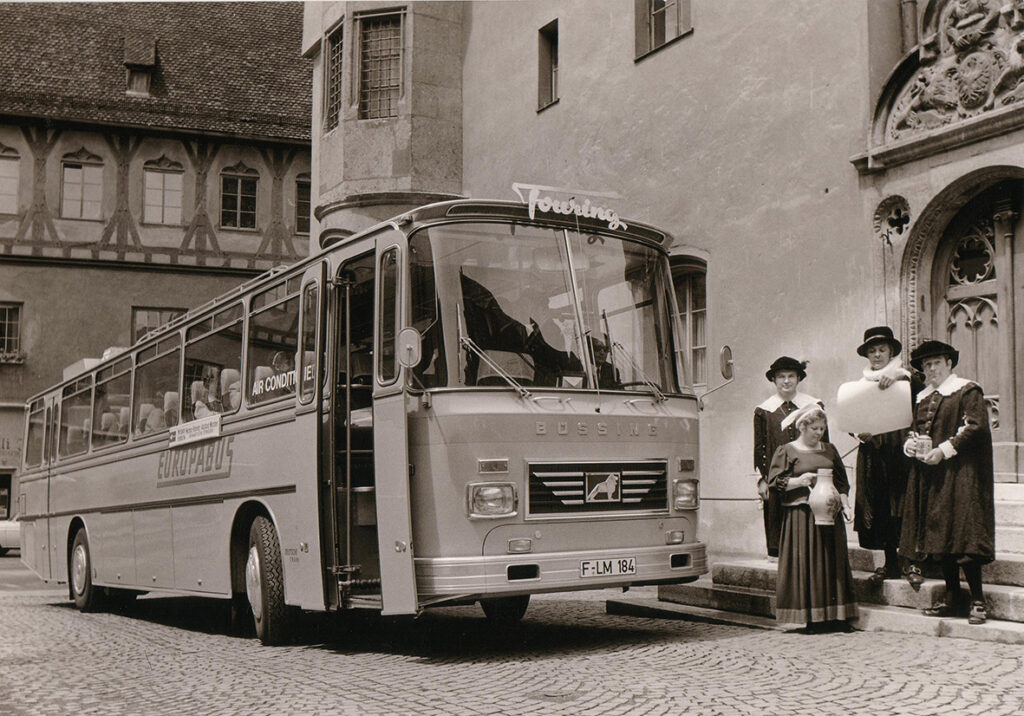
In addition to the parent company Deutsche Touring GmbH, there are now subsidiaries in numerous destinations in Germany and abroad. Touring Tours & Travel GmbH founded Romantic Road Coach GmbH in 2014 with the purpose of operating the traditional domestic German Romantic Road route, which was established on June 19, 1950. In 1955, this line became part of the Vogelfluglinie 312 from Copenhagen to Innsbruck and an integral part of Deutsche Touring GmbH’s scheduled services.


